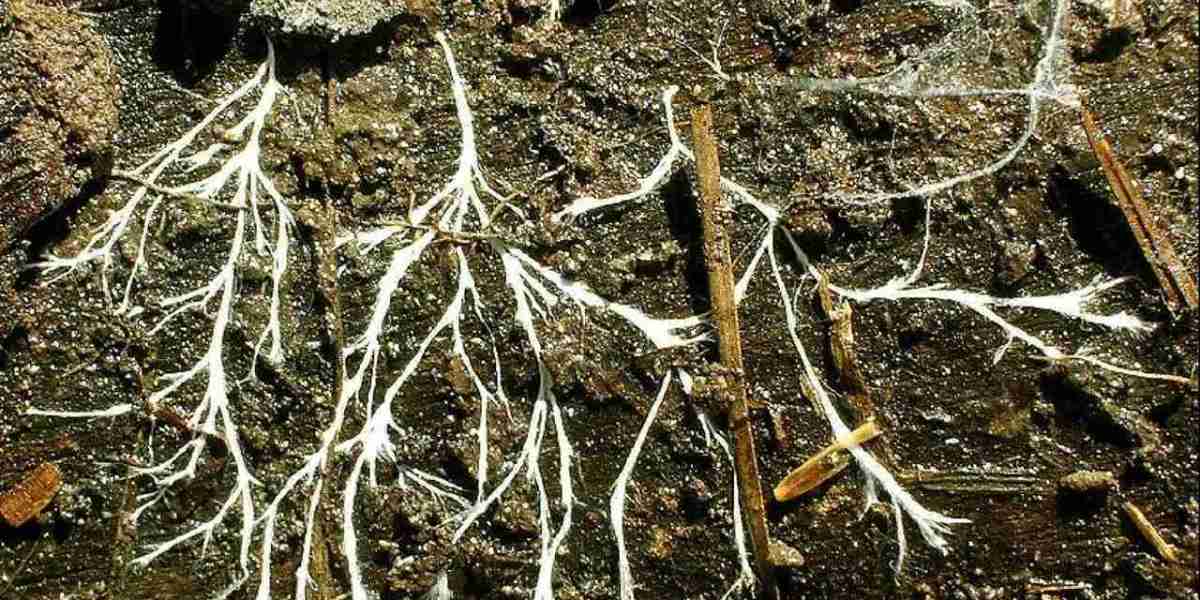In an era marked by urgent calls to reduce pollution, carbon emissions, and waste, the Mycelium Market is gaining attention as a beacon of sustainable innovation. Mycelium—the fibrous root system of fungi—offers transformative solutions across industries, promising cleaner and greener growth. Its natural ability to biodegrade, regenerate, and thrive on organic waste positions mycelium as a key player in mitigating environmental damage while fostering sustainable economic development.
This article explores how the mycelium market is driving positive environmental impact and reshaping the future of eco-friendly growth.
Mycelium’s Natural Environmental Advantages
Mycelium plays a critical role in ecosystems by decomposing organic matter, recycling nutrients, and forming symbiotic relationships with plants. These characteristics translate into multiple environmental benefits when applied in commercial contexts:
Biodegradability: Mycelium-based products naturally break down into harmless organic matter, drastically reducing landfill waste compared to plastics and synthetic materials.
Carbon Sequestration: Growing mycelium captures carbon dioxide, helping reduce greenhouse gases in the atmosphere.
Waste Valorization: Mycelium thrives on agricultural and forestry byproducts—materials that would otherwise be discarded—transforming waste into valuable goods.
Low Resource Input: Cultivating mycelium requires minimal water, land, and energy, making it far less resource-intensive than traditional manufacturing.
Environmental Benefits Across Industries
1. Packaging:
Mycelium packaging offers a biodegradable alternative to polystyrene foam and plastics, which are major contributors to pollution and ocean debris. By replacing non-recyclable packaging with mycelium-based materials, companies can significantly lower their ecological footprint.
2. Fashion:
Mycelium leather and textiles reduce dependence on animal agriculture and synthetic fibers, both linked to high water use, deforestation, and chemical pollution. Mycelium fabrics biodegrade safely at the end of their lifecycle, eliminating microplastic pollution.
3. Construction:
Mycelium composites serve as sustainable insulation and building materials that replace toxic, non-renewable options. They also improve indoor air quality by avoiding harmful chemical emissions found in conventional materials.
4. Agriculture:
Mycelium biofertilizers enhance soil health, reduce chemical fertilizer usage, and promote regenerative farming, which restores ecosystems and biodiversity.
The Mycelium Market Driving Cleaner Growth
As industries seek sustainable alternatives, the mycelium market is expanding rapidly. This growth is driven by:
Innovation: Advances in biotechnology and material science enable the development of high-performance, eco-friendly mycelium products.
Consumer Demand: Increasing awareness about environmental issues fuels demand for sustainable products made from renewable resources.
Corporate Commitments: Many companies are incorporating mycelium-based solutions to meet ESG (Environmental, Social, Governance) goals and reduce carbon footprints.
Regulatory Support: Governments worldwide are encouraging sustainable materials through policies and incentives, aiding market adoption.
Challenges and the Path Forward
While the environmental promise of the mycelium market is clear, challenges remain:
Production Scale: Scaling mycelium cultivation to meet industrial demands while maintaining sustainability is complex.
Cost Competitiveness: Mycelium products currently face price challenges compared to established materials, requiring further innovation and economies of scale.
Market Education: Building trust and awareness among consumers and industries is crucial to wider acceptance.
Supply Chain Integration: Developing reliable sources of agricultural waste and ensuring consistent quality need ongoing attention.
Conclusion: Toward a Greener Industrial Future
The Mycelium Market embodies cleaner, greener growth by offering solutions that align with nature’s cycles and minimize environmental harm. From packaging and fashion to construction and agriculture, mycelium’s versatile applications provide a sustainable alternative to resource-intensive, polluting materials.
As innovation accelerates and market adoption expands, mycelium stands to play a central role in building a circular, low-impact economy. Embracing this fungal frontier not only protects the planet but also creates new economic opportunities—demonstrating that environmental stewardship and business growth can go hand in hand. The future of sustainable development may well be rooted in the humble yet powerful mycelium.




